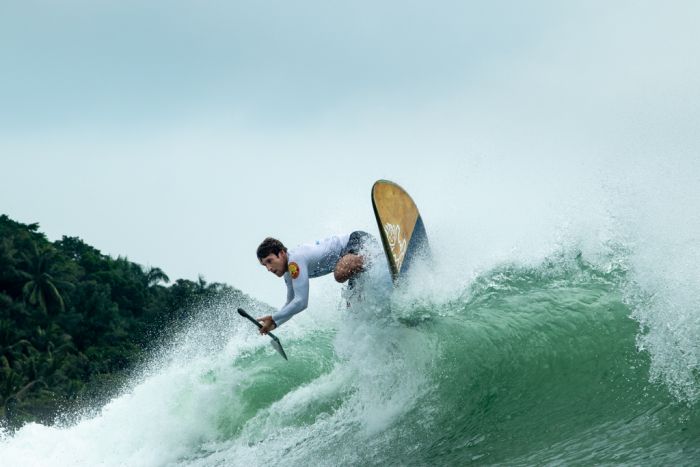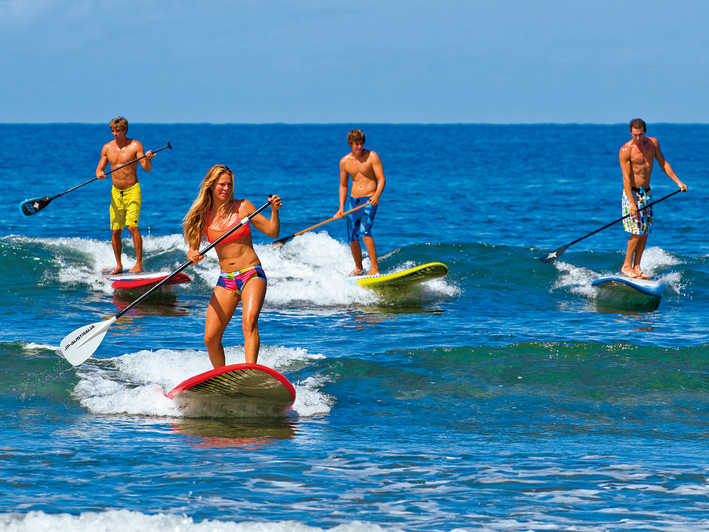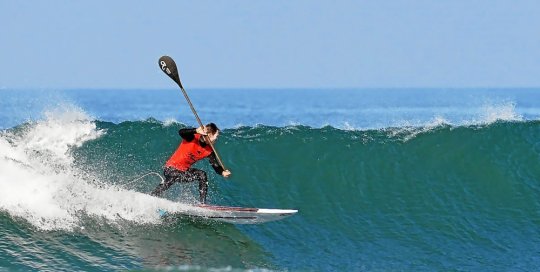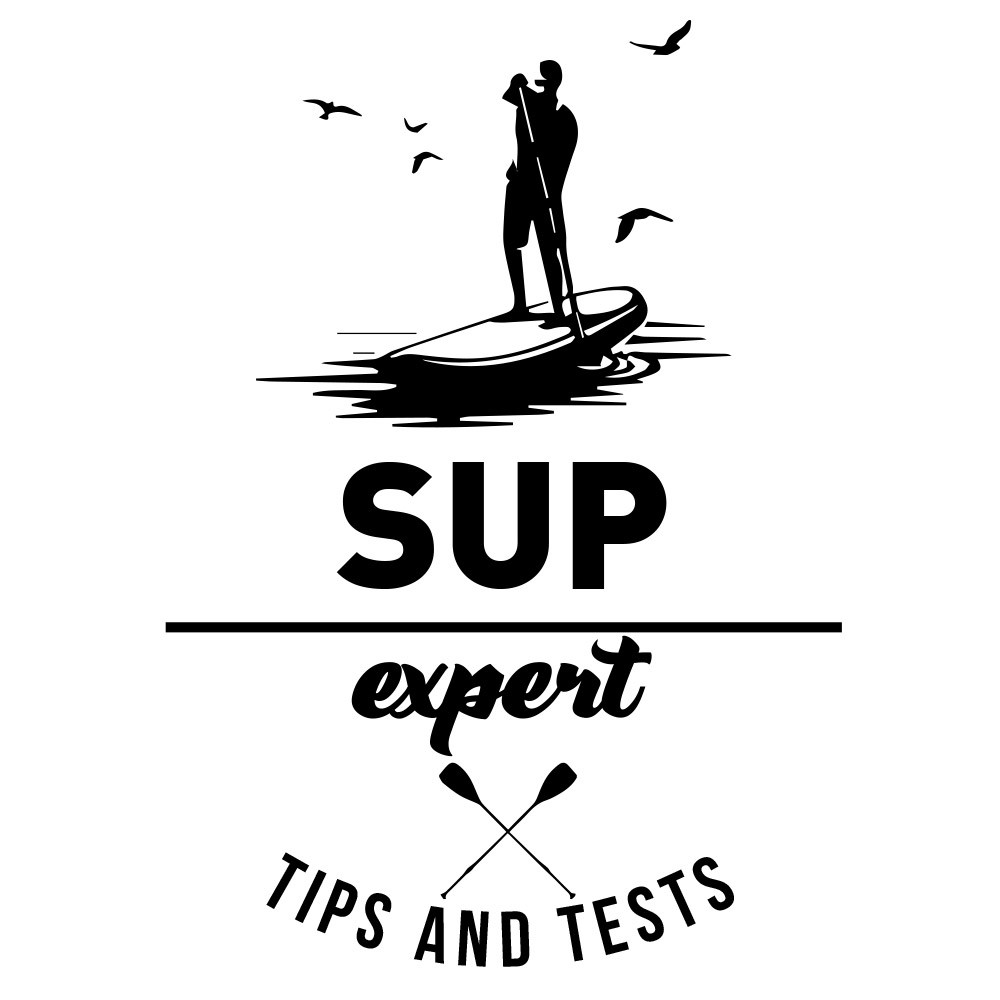Learning to surf is a long and difficult path. But what a reward when you manage to surf your first waves! The same goes for learning stand up paddle surfing, except that you are already up when you catch the wave.

Choosing a suitable place to learn, getting into the water with the right board, crossing the foam, choosing a wave, turning around at the right time, setting off and finally surfing while respecting the rules of priority and courtesy while ensuring your own safety and that of others cannot be improvised… Explanations!
First of all, you have to be comfortable on a paddle board in flat water. You also have to know how to row efficiently and make a U-turn very quickly. Otherwise it is impossible to consider crossing the foam and taking the slightest wave. And it is still, let’s not forget, the objective of stand up paddle surfing.
Examine your environment
It is essential for the first outings to be measured under easy conditions (very light onshore wind that smoothes the water, small waves). The first step is to identify potential hazards or difficulties (rocks, reefs, currents, etc.). It is also necessary to observe where the waves break, which path is the most suitable to go there, beware of the tide and its consequences. Never forget that minutes of observation are time saved and not lost, because they make it easier for the future.

Choose your equipment for stand up paddle surfing
Even if it is possible to surf with an inflatable board, a versatile rigid board will always be easier to catch the waves. The rails of the board provide a much better grip and a much healthier behaviour. Be sure to always have a leash (right – avoid leashed phones), and a combination if the water is cool.
Safety and courtesy in stand up paddle surfing
SUP in waves can be a danger to oneself and others. The length of the board added to that of the leash generates a danger radius around the rider of 4 to 6 metres during a fall or a foam crossing. Unlike surfers or bodyboarders, it is impossible in SUP to dive with your board under the waves to cross them. It is therefore always better to choose one area away from the others during the learning phase.
There are rules of priority and good use in the waves that everyone must scrupulously respect. Indeed, only one person per wave, priority to the person closest to the breaking point.
Ne Never forget that you are (most of the time) not alone in the water. It is therefore up to each of us in turn to take a wave. If you go on someone else’s wave by mistake, get out of the wave immediately and apologize!
Keep in mind that the SUP in the waves, like many other activities, is better when it is shared. So a little bit of sharing and a few smiles will always be welcome.

Crossing the foams
After the first tests in the waves on the edge, it is time to try the smooth waves that break further offshore. To do this, it will be necessary to pass the first rows of foams. The technique consists of rowing in front of the sea, regularly but dynamically. Anticipate the arrival of the foam in front of you by switching to a surf position when the foam is one meter from the nose of the board.
For this purpose, the rear foot is moved back quite clearly and the angle of its feet with respect to the board is changed. Bend your legs to lower your centre of gravity, lean firmly against the paddle and press hard on the tail to raise the front of the board, avoiding being pushed down by the (relative) power of the foam). Once the foam has passed, release its support, return to the front position and paddle again until the next foam.
If the foams are too big, dip your board under the foam, making sure that no one is behind it. Once the foam has passed, quickly get back on the board and start paddling offshore again.
Start on a wave and follow it
Once offshore, where the waves break, it is a matter of positioning yourself correctly to catch a wave in the best possible conditions. Not too far out to sea to catch a wave. Not too far to the edge not to risk being surprised by a big series that shifts.
The take-off
When you have spotted a wave that seems interesting, turn around to put the board in the right direction (towards the beach). Once the wave (which has not yet started to break) is about ten meters away, start rowing. So that you have enough speed for the wave to take the board away. As soon as the wave carries the board, move into the surf position with the rear foot far back and the feet turned perpendicular to the longitudinal axis of the board. Bend your knees and keep your back straight! This phase is called take-off.
Moving on the wave
If, on the first waves, it is easier to go straight, very quickly we will try to follow the wave. Depending on its stance (goofy or regular: right foot in front or left foot in front) and the direction of the wave, we find ourselves facing or backwards to the “frontside or backside” wave. We will then control the board with the weight of his body in order to follow the wave’s breaking as well as possible. We must manage the slope and the trajectory! The support is marked on the inner rail (wave side) and you place your paddle on the wave side as well. It can be used as a support or pendulum to balance each other.
Now that we are surfing, it is time to start pushing and lightening to generate speed and try the first manoeuvres. And start aiming at the tube! But that’s another story.
